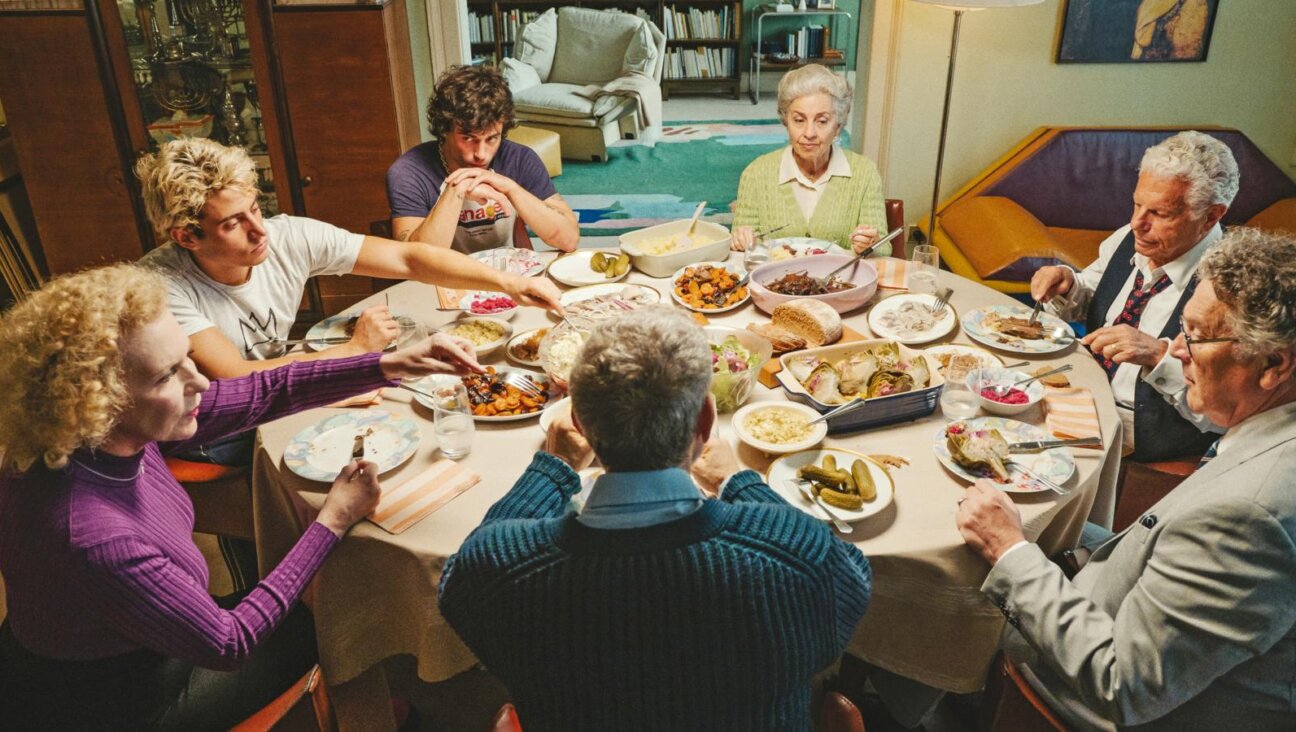Fermented stuffed grape leaves for #QuarantineShabbat

Ferment grape leaves by submerging them in brine.
Anyone else feeling claustrophobic?
I’m blessed, I get that. We have a yard, fruit trees and vegetable gardens I’ve been tending for two decades – even a hammock. As internal exile goes, it’s pretty sweet.
But here in Los Angeles, county officials just announced the stay-at-home order may extend through August. And, as the quarantine drags on, I’m feeling more and more the confinement and the lack. This week, there was no flour to be had, or yeast. We who are accustomed to plenty, are now coming up against scarcity.
My answer to the lack of food is…food itself. One thing cooking teaches you is that food is not something stores or restaurants or Instacart provides, it is something God, or nature, or whatever you’re comfortable believing in, provides. In Genesis, God doesn’t tell Adam and Eve their shelves will be filled with good things to eat, but that the earth will. “And out of the ground made Adonai to grow every tree that is pleasant to the sight, and good for food.”
And so it was.
I thought of that early in the shutdown when I walked one of our dogs in the alley behind our house. It’s somewhere I never go unless I need to empty the trash. But these days, hey, it’s a place to go.
So Gracie and I were touring the roughed up asphalt, trash bins and half-finished lumber projects of our neighbors when I noticed a grapevine pouring over a fence into the alley. It belonged to our friends Andy and Kate, and I helped myself to a few dozen large green leaves.
Because there it was, spilling over into an iffy Venice alley: stuffed grape leaves.

A grapevine grows in a Venice alley, just waiting to be rolled.
Most recipes for stuffed grape leaves call for jarred leaves from the market. But come Spring, grape leaves all around us. If your neighbor is cool with it, take a few.
Then what? Grape leaves need taming – they are naturally tannic and acidic.
And since we have all the time in the world, I decided to ferment them. I used the standard lacto-fermentation proportions of 2 ½ tablespoons salt to 2 quarts filtered water, submerged the leaves, and four days later, they were…perfect. Mellow, flavorful, and slightly lemony. From there all I had to do was adapt my favorite recipe for Palestinian stuffed grape leaves, waraq dawali, from my Palestinian food mentor, Joudie Kalla.

Ferment grape leaves by submerging them in brine.
I’ve never met Joudie, but her two cookbooks, Palestine on a Plate, and Baladi have been my way into a cuisine that grew out of a land whose food and people I love. She uses lamb in her waraq; I’m making them vegan, featuring zucchini and rice, which is also traditional.
The finished leaves can be a light meal with a lemony yogurt sauce, or an appetizer. They will remind you to see the connection between the earth and your food whenever you walk.
By the way, this isn’t just a West Coast-centric, Mediterranean-climate blessing. On your neighborhood walks you may find young dandelion, walnuts, nasturtium, wild alliums, oxalis, cattails— all for the judicious and considerate sampling. All of the folks rediscovering the wonders of sourdough are essentially foragers as well–gathering wild yeast from the air and turning it into something delicious. There are plenty of books and online resources to help you see the bounty amidst our scarcity. (My favorite is Pascal Bauder, who once helped prepare an entire Passover meal from foraged food.)
Food has that power to reconnect us with the bounty of a nurturing earth. What’s truly scarce, too often, is our ability to understand that.
To watch me ferment, roll and cook these grape leaves, join my live #QuarantineShabbat cooking show, Fri., May 15 at 12 p.m. PDT, 3 p.m. EDT on The Forward’s Facebook page. Follow me @foodaism.
Stuffed Fermented Grape Leaves
250 gr fresh grape leaves, washed
2 ½ T. kosher or sea salt (non-iodized)
1 pound zucchini
225 gr medium grain rice
3 tomatoes, 1 finely chopped, 2 sliced
a small bunch parsley, chopped
a small bunch mint, chopped
a small bunch dill, chopped
3 garlic cloves, minced
2 onion, one finely chopped, one sliced
salt and pepper
6 tablespoons extra virgin olive oil
1 pint yogurt (optional)
1 teaspoon lemon juice (optional)
To make the leaves:
In a large non-reactive plastic or glass container, add salt and enough water to cover the leaves, stir to dissolve the salt. Add the leaves. Use a weight or smaller lid to keep the leaves submerged. Close the container and let sit 3-5 days, or longer. Taste a bit of leaf. It should be slightly tart but edible. It will also be a dull olive green in color. Let ferment longer if necessary. If ready, use for recipe or keep in brine until ready to use. You can refrigerate if you like at this point.
To stuff and cook the zucchini and leaves:
Core the zucchini with a vegetable corer. Stuff with rice mixture, leaving a ½ inch for the rice to expand.
In a bowl, mix together the rice, chopped herbs, minced onion, one finely chopped tomato, garlic, 1 T. olive oil, salt and pepper to taste. Stir well.
In the bottom of a large pot, add one sliced onion and two sliced tomatoes.
Roll the leaves: place each leaf dull side up, pointy end away from you. Place a teaspoon or so of filling at the base. Roll the bottom to cover it, bring in the sides, and finish rolling into a stubby cigar-shaped package. Place the stuffed zucchini in the bottom of the pot, on top of the onion and tomato. Place the stuffed grape leaves around them, packing them in. Add water up to the top of the leaves. Use a heat-proof plate to weight the vegetables down, then cover the pot.
Bring to a boil then lower to a simmer and cook about 30 minutes. Uncover and continue cooking until the water is evaporated and the rice is tender (try one!).
Let rest a few minutes. You can serve from the pot, or carefully invert onto a plate so the squash is on top. Serve warm, room temperature, or cold the next day.
To make the yogurt sauce, blend the lemon juice with the yogurt. Pour over the stuffed leaves and serve with some more olive oil and lemon wedges.
A message from our Publisher & CEO Rachel Fishman Feddersen

I hope you appreciated this article. Before you go, I’d like to ask you to please support the Forward’s award-winning, nonprofit journalism so that we can be prepared for whatever news 2025 brings.
At a time when other newsrooms are closing or cutting back, the Forward has removed its paywall and invested additional resources to report on the ground from Israel and around the U.S. on the impact of the war, rising antisemitism and polarized discourse.
Readers like you make it all possible. Support our work by becoming a Forward Member and connect with our journalism and your community.
— Rachel Fishman Feddersen, Publisher and CEO
























